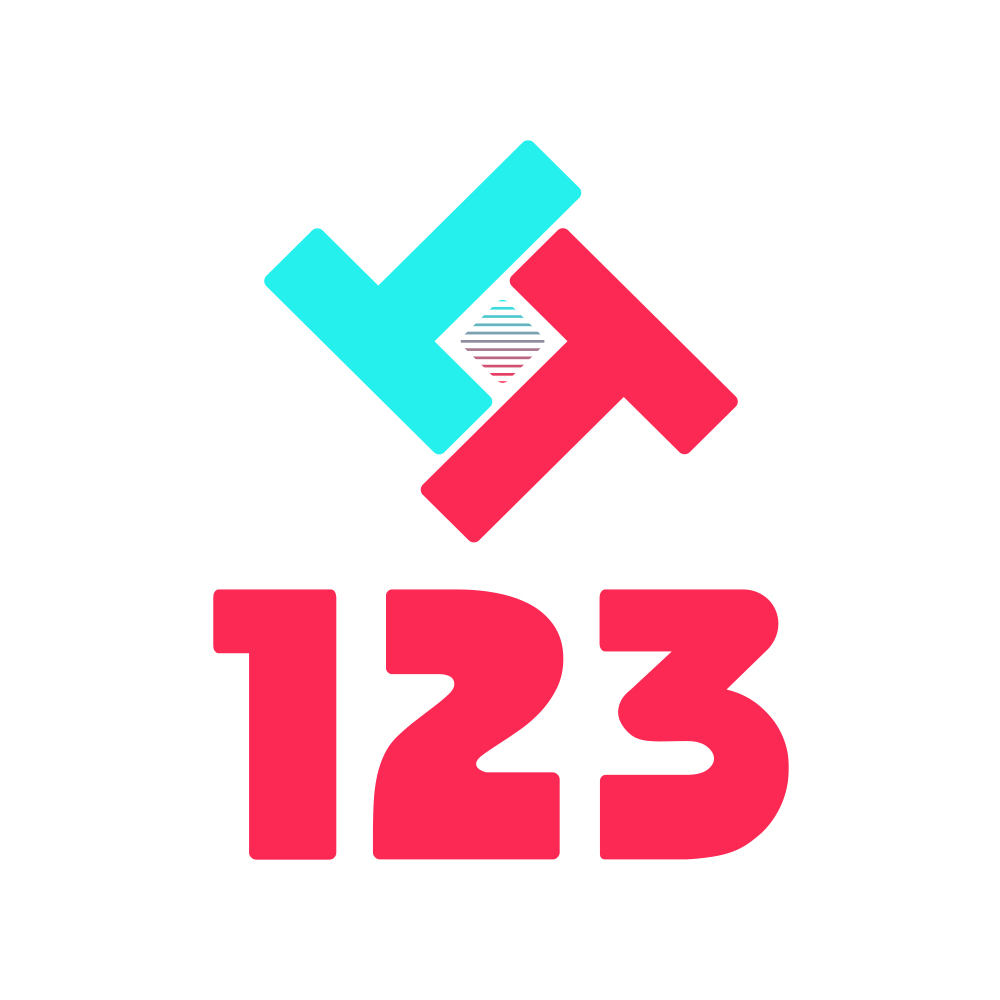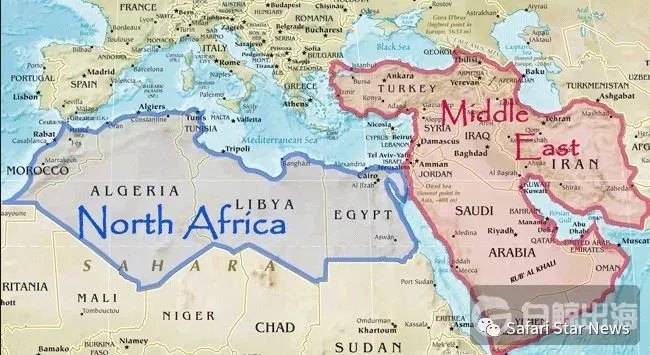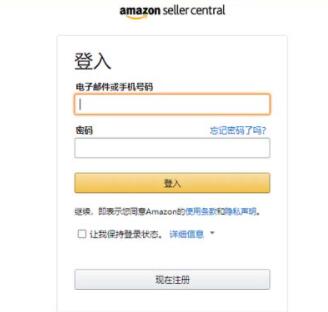Lazada GSP和ASC站点的区别


The MENA region is going to be the next big growth market for e-commerce. The Gulf region especially is being touted as the market that’s set to grow exponentially within the next couple of years. In fact, according to PayFort, the Middle East e-commerce market would grow to US$69 billion by 2020, almost doubling in size in just a few years. According to Statista, overall growth across the Middle East and Africa would be at a CAGR of 11% in the next four years (2018-2022).
中东和北非地区将成为电子商务的下一个巨大增长市场。海湾地区尤其受到吹捧,因为该市场将在未来几年内成倍增长。事实上,据PayFort称,到2020年,中东电子商务市场将增长到690亿美元,在短短几年内规模几乎翻了一番。Statista的数据显示,未来四年(2018-2022年),中东和非洲的整体增长率将达到11%的复合年增长率。

Well, this is all good, but what’s the current scenario of e-commerce in the Middle East? An oft-quoted Gartner study stated that, in 2016, only 15% business in the Middle East had any online commerce presence, and back then, 90% of online purchases made by residents were from foreign businesses. It was also publicly reported that only 2% of retail in the Middle East took place online, despite the region having one of the best internet penetration rates in the world.
这一切都很好,但是中东电子商务的当前情况如何?经常引用的Gartner研究表明,2016年,中东只有15%的企业拥有任何在线贸易业务,那时,居民进行的在线购物中有90%来自外国企业。另据公开报道,尽管中东地区的互联网普及率是世界上最好的地区之一,但中东只有2%的零售是在线进行的。
The potential for e-commerce definitely exists in the Middle East. Let’s take a closer look at the factors that are favorable for growth, challenges the region faces, key markets in the region, key players in these markets, and buying behavior of consumers in these markets.
电子商务的潜力肯定存在于中东。让我们仔细研究有利于增长的因素,该地区面临的挑战,该地区的主要市场,这些市场的主要参与者以及这些市场中消费者的购买行为。
FUELING E-COMMERCE GROWTH
The Middle East, and especially the Gulf region, benefits from high spending potential, as the region boasts of a high per capita income. The fact that the internet penetration and social media penetration is also some of the best in the world means that the Middle East is ripe for online business.
电子商务的成长
中东,尤其是海湾地区,受益于高消费潜力,因为该地区人均收入高。互联网渗透率和社交媒体渗透率也是世界上最好的事实,这意味着中东的在线业务已经成熟。
A 2017 We Are Social and Hootsuite study noted that the UAE has the world’s highest social media penetration, while Saudi Arabia had the highest social media user growth in the world. Deloitte shared similar findings in 2017, which showcased social media penetration to be 99% in the UAE, and 73% year-on-year (YoY) growth in Saudi Arabia. When it comes to internet penetration, the region is, again, well above the global average of 51.7%, with more than 60% of the population using the internet, according to Deloitte’s Going Digital report. The UAE leads here as well, with more than 80% internet penetration in the state, which is, again, one of the highest in the entire world. If you look at the MENA region as a whole, the internet penetration there has been rising rapidly at 15% YoY. Smartphone penetration is also unusually high in the region. For example, in Saudi Arabia, nine out of 10 people use a smartphone, and most of them use it to go online. The great cellular connectivity in the region also helps.
2017年We Are Social and Hootsuite 的研究指出,阿联酋拥有全球最高的社交媒体渗透率,而沙特阿拉伯的社交媒体用户增长量则是全球最高的。德勤(Deloitte)在2017年分享了类似的调查结果,显示阿联酋的社交媒体渗透率达到99%,沙特阿拉伯同比增长73%。根据德勤的《 Going Digital》报告,在互联网普及率方面,该地区再次远远高于51.7%的全球平均水平,超过60%的人口使用互联网。阿联酋也位居榜首,该州的互联网普及率超过80%,再次成为全球最高的互联网普及率之一。如果您整体看一下中东和北非地区,则该地区的互联网普及率已迅速增长,同比增长15%。智能手机在该地区的渗透率也异常高。例如,在沙特阿拉伯,十分之九的人使用智能手机,而且大多数人使用智能手机上网。该地区良好的蜂窝连接性也有帮助。
High social media, internet penetration, and connectivity is only one side of the story when it comes to the potential of e-commerce in the Middle East. Another side is favorable regulations for online commerce, especially in the GCC. Let’s take the case of the UAE, where the government actively participates in making it easier for tech businesses to operate out of the region. For example, in the UAE, new e-commerce regulations from the Dubai Free Zones Council were made to promote more foreign direct investment into the e-commerce sector in Dubai, and help make the Emirate more attractive for e-commerce companies. The city also boasts of neighborhoods such as CommerCity, which is a $735 million project that’s dedicated to ecommerce, and located right next to the Dubai airport. This is apart from Dubai Internet City, which, according to reports, is already full, and is going to be expanded soon. Such initiatives are also under development in other countries in the GCC. What’s also interesting is the growing popularity of e-governance in these countries, which shows how both the government and its citizens are very comfortable going online to get various tasks done.
当涉及到中东电子商务的潜力时,高社交媒体,互联网渗透率和连接性只是故事的一方面。另一面是对在线商务特别是海湾合作委员会(GCC)中有利的法规。让我们以阿联酋为例,该国政府积极参与,使科技企业更容易在该地区以外开展业务。例如,在阿联酋,迪拜免税区理事会制定了新的电子商务法规,以促进对迪拜电子商务领域的更多外国直接投资,并使阿联酋对电子商务公司更具吸引力。该市还拥有诸如CommerCity之类的社区,CommerCity是一个耗资7.35亿美元的项目,致力于电子商务,位于迪拜机场附近。据报道,这与迪拜互联网城不一样,迪拜互联网城已经爆满,并将很快进行扩展。海湾合作委员会其他国家也在制定此类举措。有趣的是,电子政务在这些国家/地区的日渐普及,这表明政府及其公民都非常乐于上网以完成各种任务。
CHALLENGES TO (AND DRIVERS OF) E-COMMERCE
One of the primary challenges when it comes to e-commerce in the GCC and the Middle East is the lack of area codes, which can hamper last mile delivery. The big problem to solve for many e-commerce and logistics companies is to bring down the time and cost to buying online.
电子商务(及其驱动力)的挑战
在海湾合作委员会和中东地区,电子商务方面的主要挑战之一是缺少区号,这可能会阻碍最后一英里的运送。对于许多电子商务和物流公司而言,要解决的主要问题是减少在线购买的时间和成本。
Digital payment is another area where the region lags behind when compared to developed markets. Except for the UAE, other countries in the Middle East are yet to completely adopt online and mobile payments. Cash on delivery is still a primary mode of payment in the region, which brings up the cost of operations for e-commerce players. It can make up around 70% of all e-commerce transactions in Saudi Arabia, according to the consultancy Hally & Partners.
与发达市场相比,数字支付是该地区落后的另一个领域。除阿联酋外,中东其他国家尚未完全采用在线和移动支付。货到付款仍然是该地区的主要付款方式,这增加了电子商务参与者的运营成本。根据咨询公司Hally&Partners的数据,它可以构成沙特阿拉伯所有电子商务交易的约70%。
When we look at key markets in the GCC, two of them come into the forefront. One is the UAE, and the other is Saudi Arabia. In North Africa, Egypt is one of the biggest markets that has a huge potential for growth in the future. Although Bahrain, Oman, and Kuwait also have strong e-commerce presence and growth, the relatively small population in these countries means that their contribution to the overall region numbers is also relatively small.
当我们考察海湾合作委员会的主要市场时,其中两个就位居前列。一个是阿联酋,另一个是沙特阿拉伯。在北非,埃及是最大的市场之一,在未来具有巨大的增长潜力。尽管巴林,阿曼和科威特也拥有强大的电子商务业务和增长势头,但这些国家的人口相对较少,这意味着它们对整个地区总数的贡献也相对较小。
The UAE is one of the largest and most mature markets in the Middle East today for e-commerce. According to PayFort, it was valued at $27 billion in 2016. BMI Research states that by 2020, the market would be worth 45.6% of the total Middle East market. Great infrastructure, ease of doing business, and a tech-savvy, cosmopolitan population with high speeding power makes the country very favorable for online commerce.
阿联酋是当今中东最大和最成熟的电子商务市场之一。根据PayFort的数据,2016年该市场的价值为270亿美元。BMIResearch指出,到2020年,该市场将占中东市场总量的45.6%。强大的基础设施,轻松的业务往来以及精通技术的国际化大都市人口,以及高速发展的力量,使得该国非常适合在线贸易。
Saudi Arabia is also a huge market for e-commerce in the Middle East, with the same PayFort study valuing it at $22 billion in 2016. Growth in the market though could be gradual, when compared to the UAE and other countries in the GCC. This is primarily because of lack of retail infrastructure and government initiatives that aim to promote e-commerce and other tech businesses. The Saudization scheme by the government is also said to make it a little more difficult for international brands and businesses to make a mark in the country, although national businesses may get a boost due to this. By 2020, BMI says that the Saudi Arabian e-commerce market could be 29.1% of the region.
沙特阿拉伯还是中东电子商务的巨大市场,根据PayFort的研究,该市场在2016年的估值为220亿美元。与阿联酋和海湾合作委员会(GCC)的其他国家相比,市场的增长可能是渐进的。这主要是由于缺乏零售基础设施以及旨在促进电子商务和其他技术业务的政府举措。据说,政府的“提高声音效率”计划会使国际品牌和企业在该国树立商标变得更加困难,尽管因此,国有企业可能会有所增长。BMI称,到2020年,沙特阿拉伯的电子商务市场可能占该地区的29.1%。
Related: Bolstering Entrepreneurship In Saudi Arabia: Badir CEO Nawaf Al Sahhaf
Egypt has had a storied e-commerce history, having established some of the region’s firsts, such as online food ordering way back in 1999 with Otlob. Yet, e-commerce penetration in the country is still at a nascent stage. A study by the country’s Ministry of Communications and Information Technology (MCIT) said that e-commerce only comprised 0.4% of the total retail trade in Egypt. But this is also set to go up very quickly, as the region has one of the largest population of internet users in the Arab world. The MCIT is also committed to the growth of e-commerce in the region, with policy and development being focused towards this cause, making the market very attractive for e-commerce players.
相关:增强沙特阿拉伯的企业家精神:Badir首席执行官Nawaf Al Sahhaf
埃及拥有悠久的电子商务历史,建立了该地区的一些先河,例如1999年与Otlob一起进行在线食品订购。但是,该国的电子商务渗透仍处于起步阶段。该国通信和信息技术部(MCIT)进行的一项研究表明,电子商务仅占埃及零售总额的0.4%。但这也将很快增长,因为该地区是阿拉伯世界上互联网用户最多的国家之一。MCIT还致力于该地区电子商务的发展,针对这一原因的政策和发展使该市场对电子商务参与者非常有吸引力。
CONSUMER BEHAVIOR IN THE MIDDLE EAST
Apart from various brands and their e-commerce stores, there are a few prominent e-commerce marketplaces in the Middle East. The biggest is Souq.com, which had 50 million customers and operated out of all the countries in the GCC, when Amazon acquired them in 2017. The same year, another regional upstart, Noon.com, was launched by Mohamed Alabbar, the chairman of Emaar. Namshi, Ali Express, and Ebay etc., are other prominent marketplaces in the region. When it comes to food delivery, some of the popular players in the region are Talabat, Deliveroo, MakeMyMeal, Otlob, etc.
中东消费者的行为
除了各种品牌及其电子商务商店外,中东还有一些著名的电子商务市场。最大的是Souq.com,该公司拥有5000万客户,并在2017年被亚马逊收购时在GCC的所有国家/地区运营。同年,董事长穆罕默德·阿拉伯(Mohamed Alabbar)发起了另一个地区新贵Noon.com。艾玛尔 Namshi,Ali Express和Ebay等是该地区其他著名的市场。在食品配送方面,该地区一些受欢迎的企业包括Talabat,Deliveroo,MakeMyMeal,Otlob等。
According to survey portal Statista, e-commerce user penetration in the Middle East and Africa region stood at 54.6% in 2018 and would grow to 58.8% by 2022. PwC’s Total Retail 2017 survey took an in depth look at buying trends in the Middle East. They found out that younger people were more likely to shop online in the region, with 36% of those who were aged between 18-24 shopped online, at least once a month, when compared to only 13% of those who were aged 55 years or more. According to Hall & Partners, there is a significant number of women in the UAE who prefer to shop online, with around a third of those surveyed buying something online, every week. Similar stories are reflected across the mature markets of the Middle East.
根据调查门户网站Statista的数据,2018年中东和非洲地区的电子商务用户普及率为54.6%,到2022年将增长到58.8%。普华永道的《 2017年零售总额》调查深入研究了中东的购买趋势 。他们发现,年轻人在该地区网上购物的可能性更高,年龄在18-24岁之间的年轻人中,有36%的人每月至少上网一次,而55岁以下的年轻人中只有13% 或者更多。根据Hall&Partners的说法,阿联酋有大量女性更喜欢在网上购物,每周接受调查的女性中约有三分之一在网上购物。类似的故事也反映在中东的成熟市场上。
The motivation to buy online differs for different markets and different demographics; however, when we look at the broader trends, we can see that the lower price of goods online was the biggest driving factor towards an online purchase, as 40% consumers stated that as their major motivational factor in PwC’s Total Retail 2017. 31% also said that greater product selection was a factor towards their purchase. Surprisingly, only 17% said that convenience was a factor for shopping online. This could be mainly due to higher delivery times, and a prevalent “mall culture” in the Middle East, although the trend is gradually changing, as it becomes easier to shop online, and as the quality of service increases.
在线购买的动机因不同的市场和人群而异。然而,当我们观察到更广泛的趋势时,我们可以看到,在线商品的较低价格是促成在线购买的最大驱动因素,因为40%的消费者表示,这是普华永道《 2017年零售总额》的主要动机。31% 说更多的产品选择是他们购买的一个因素。令人惊讶的是,只有17%的人表示便利是在线购物的一个因素。这可能主要是由于交货时间增加,以及中东流行的“购物中心文化”,尽管趋势正在逐渐改变,因为它变得更容易在网上购物,并且服务质量提高了。
According to PwC’s Total Retail 2017, these were the major categories when it comes to e-commerce in the Middle East: books, music, movies, and video games categories lead with 54% of those surveyed shopping online here. This was followed by health and beauty at 48%, and consumer, electronics, and computer at 44%. Jewelry and watches, clothing and footwear stood at 42% and 41% respectively, whereas furniture and homeware, household appliances stood at 35% and 31% respectively. Surprisingly, online groceries were a category that wasn’t as popular yet in the region, with only 27% of people admitting to buying them online.

根据普华永道的《 2017年零售总额》,这些是中东电子商务的主要类别:书籍,音乐,电影和视频游戏类别占其中54%的受访在线购物者。 其次是健康和美容,占48%,消费,电子和计算机,占44%。 珠宝和手表,服装和鞋类分别占42%和41%,而家具和家庭用品,家用电器分别占35%和31%。 令人惊讶的是,在线食品杂货在该地区尚未流行,只有27%的人承认在线购买食品。

Related: Inside The MENA High Tech Boom
56% of Middle Eastern shoppers were on mobile devices while shopping online, and 52% of them were influenced by social media reviews while making a purchase. Although PwC states that 80% of Middle Eastern e-commerce sales were paid for through cash on delivery, the UAE is again an outlier here, as, according to Souq.com, over 60% of their transactions were through credit cards.
有关:在中东和北非高科技景气内部
中东购物者中有56%在网上购物时使用移动设备,其中52%的消费者在购物时受到社交媒体评论的影响。尽管普华永道指出,中东80%的电子商务销售是通过货到付款来支付的,但阿联酋在这里仍然是一个例外,因为据Souq.com称,其60%以上的交易是通过信用卡进行的。
Trust is an important factor for consumers buying in the Middle East, as 62% of them were concerned about their personal information getting leaked online. 60% of consumers were more likely to buy from brands they trusted, and 32% remain loyal to their favorite retailer, because of their trust in the brand.
信任是中东消费者购买的重要因素,因为62%的消费者担心自己的个人信息在网上泄露。60%的消费者更有可能从他们信任的品牌那里购买商品,而32%的消费者由于对品牌的信任而仍然忠于自己喜欢的零售商。
48% consumers had also stated that they were influenced to make repeat purchases, because of the attractive offers that were communicated to them. Social media was another influential channel, where 48% of consumers were engaged through promotions.
48%的消费者还表示,由于传达给他们的诱人优惠,他们受到了重复购买的影响。社交媒体是另一个有影响力的渠道,其中48%的消费者通过促销参与。
Having a trustworthy, secure, and mobile-friendly online ordering platform is thus important in the region. Cross-channel engagement campaigns with strong social media strategies is also something e-commerce operations in EMEA must adopt.
因此,在该地区拥有一个值得信赖,安全且对移动设备友好的在线订购平台非常重要。具有强大社交媒体策略的跨渠道参与活动也是欧洲,中东和非洲地区电子商务运营必须采用的方法。
FUTURE TRENDS
Language and localization are very important aspects of commerce in the Middle East, as even the Arabic dialect can vary widely across markets. Brands have slowly started to under stand this, and they have started to model their online presence according to each market’s preferences.
未来的趋势
语言和本地化是中东商业中非常重要的方面,因为即使阿拉伯方言在不同的市场中也会有很大差异。品牌逐渐开始理解这一点,他们已经开始根据每个市场的喜好来模拟其在线形象。
The Middle Eastern market is also going to reflect similar tech trends as other markets across the globe, with increasing use of big data analytics, artificial intelligence, chatbots, faster delivery means, mobile payments, and omnichannel retailing, all used to aide commerce. With the increase of tech companies in the region, the sharing economy, and subsequently, the internet economy would also see a significant rise in the Middle East.
随着越来越多的大数据分析,人工智能,聊天机器人,更快的交付方式,移动支付和全渠道零售的使用,中东市场也将反映出与全球其他市场类似的技术趋势。 随着该地区科技公司的增加,共享经济以及随后的互联网经济的发展,中东地区也将显着增长。
With the young, tech-savvy population, high smartphone and internet penetration, and well-established retail network, we can see that retail in Middle East is going to grow across channels. E-commerce, as well as brick-and-mortar retail, would work at helping each channel sell more, as more mature markets across the world have shown. Retailers today must focus on getting online, and making consumer experience seamless and connected across all channels to unlock their next phase of growth.
随着年轻,精通技术的人群,高智能手机和互联网普及率以及完善的零售网络,我们可以看到中东的零售将通过各种渠道增长。电子商务,以及实体零售,将有助于帮助每个渠道销售更多的产品,正如世界上更成熟的市场所表明的那样。如今的零售商必须专注于上网,并使消费者体验无缝连接在所有渠道上,以释放他们的下一个增长阶段。
As a brand, it’s important today to have presence in the major marketplaces in the Middle East. Marketplaces such as Souq, Noon, Namshi, eBay, Amazon etc. can be a great way to reach more consumers and increase sales. Marketplace enablement solutions that help you to list, sell, and process orders across multiple marketplaces, from a single dashboard, can make it very easy to do so.
作为品牌,在中东的主要市场开展业务对当今至关重要。Souq,Noon,Namshi,eBay,Amazon等市场可能是吸引更多消费者和增加销量的好方法。市场支持解决方案可帮助您从单个仪表板在多个市场上列出,出售和处理订单,这非常容易做到。

E-commerce consumers in the Middle East are not just restricted to purchase from online marketplaces, but increasingly are buying directly from the brands that they trust. Hence, it’s important to establish your own brand website early, and extend your offline business to online channels. Today, you could be missing out on sales without having crosschannel presence. Setting up your e-commerce website could be the first step you take towards making your business consumer ready for today, and future ready for tomorrow. Let’s see what are some important factors you should take into consideration while choosing the right e-commerce platform for your website:
中东的电子商务消费者不仅限于从在线市场购买商品,而且越来越多地直接从他们信任的品牌购买商品。因此,重要的是尽早建立自己的品牌网站,并将离线业务扩展到在线渠道。今天,如果没有跨渠道存在,您可能会错过销售机会。设置您的电子商务网站可能是您使企业消费者为今天做好准备,为明天做好准备的第一步。让我们看看在为网站选择合适的电子商务平台时应考虑哪些重要因素:
1. Making consumer experience seamless
You must ensure you are providing your consumers with the easiest possible purchase experience online. This means fast, intuitive, responsive consumer websites and mobile-ready app-like experiences on progressive web apps. Offering multiple checkout options such as click-and-collect or home delivery is also important, and so are seamless payments through the consumer’s preferred payment method.
1.使消费者体验无缝
您必须确保为您的消费者提供最简单的在线购买体验。这意味着快速,直观,响应迅速的消费者网站,以及在渐进式Web应用程序上的类似移动设备的应用程序体验。提供诸如“点击收集”或“送货上门”之类的多种结帐选项也很重要,通过消费者的首选付款方式进行无缝付款也很重要。
2. Being ready to extend and grow
Your e-commerce platform must allow you to be agile and extensible, so your business is completely future-ready. Fast go-tomarket time, multi-country, language, and currency support is a must-have for running commerce in regions as diverse as the Middle East. Allowing business users to easily set up and run websites and promotions without help from IT is also a helpful addition. Having ready integrations with points of sales (PoS), logistics, payment gateways, entreprise resource planning (ERP), etc. could go a long way into making operations smoother and easier.
2.准备好扩展和成长
您的电子商务平台必须允许您敏捷和可扩展,因此您的业务完全可以面向未来。快速上市时间,多国家/地区,语言和货币支持是在中东等不同地区开展商业活动的必不可少的条件。在没有IT部门帮助的情况下,允许业务用户轻松地设置和运行网站和促销活动也很有帮助。与销售点(PoS),物流,支付网关,企业资源计划(ERP)等进行现成的集成可以大大简化运营过程。
3. Personalizing experiences, and socializing engagement
Consumers today expect relevant and personalized experiences while they shop. Your ability to deliver on these personalized experiences to your visitors, starting from the look and feel of your website, to the products that are on display to them, could have a dramatic effect on conversions. Personalized engagements and promotions can also increase visits and sales. You also need to look into availability of services such as conversion rate optimization, search engine optimization, digital and social media marketing to reach your consumers, and convert them.
3.个性化体验和社交参与
如今,消费者在购物时期望获得相关的个性化体验。从网站的外观和感觉,到向他们展示的产品,向访问者提供这些个性化体验的能力都可能对转化产生巨大影响。个性化的参与和促销活动也可以增加访问量和销售量。您还需要研究服务的可用性,例如转化率优化,搜索引擎优化,数字和社交媒体营销,以覆盖您的消费者并进行转化。
4. Making your business easy to operate
An easy-to-use platform with intuitive UI that allows you to create, upload, and manage product catalogs, website content, and promotions, with simple drag-anddrop functionality can help ease day-to-day operations by allowing any business user to make changes on the website quickly. A sophisticated order management system on the other hand can make order processing and fulfilment quick and efficient. The ability to easily reconcile accounts, refunds, and manage tax compliance across regions are also important while running an e-commerce business across the Middle East.
4. 使您的业务易于运营
一个简单易用的平台,具有直观的UI,可让您创建,上传和管理产品目录,网站内容和促销,并具有简单的拖放功能,可允许任何业务用户轻松地进行日常操作。快速在网站上进行更改。另一方面,复杂的订单管理系统可以使订单处理和履行快速而有效。在整个中东地区开展电子商务业务时,轻松实现跨地区帐户,退款和管理税收合规性的能力也很重要。
5. Ensuring consumer trust
Finally, your e-commerce platform needs to be completely scalable, having the ability to auto adjust to handle any traffic or order volume. Having good stability and uptime is also important to ensure your site is always available to your consumers. Speaking of consumers, keeping private and identifiable consumer data and payment data secure is really important today, especially in the Middle East where trust is known to be a significant aspect of loyalty when shopping online. As a result, you should give utmost importance to the security capabilities of your platform.
5。确保消费者信任
最后,您的电子商务平台需要完全可扩展,并具有自动调整以处理任何流量或订单量的能力。拥有良好的稳定性和正常运行时间对于确保您的用户始终可以访问您的站点也很重要。对于消费者而言,保护私有和可识别的消费者数据以及支付数据的安全在今天确实非常重要,尤其是在中东,在网上购物时,信任是忠诚度的重要方面。因此,您应该非常重视平台的安全功能。

我们建了一个亚马逊卖家交流群,里面不乏很多大卖家。
现在扫码回复“ 加群 ”,拉你进群。
热门文章
*30分钟更新一次































